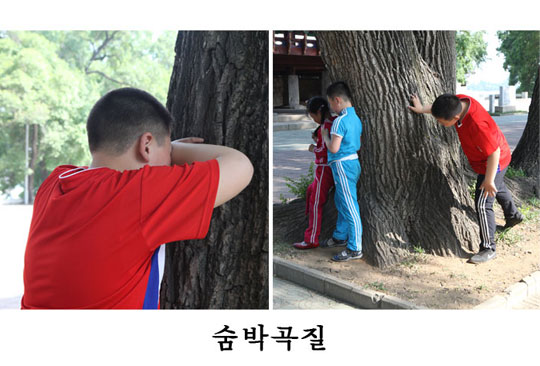State Intangible Cultural Heritage: Sumpakkokjil, a game of hide-and-seek
What is among the elements lately registered on the State Inventory of Intangible Cultural Heritage is Sumpakkokjil, a game of hide-and-seek.
It is the game for children that a child designated as a tiger finds out the hidden children.
According to the historic records, hide-and-seek was much popular among children during the Koryo period.
In the past, this game had different names such as Sumkinori, Kamchulnaegi, Sullaejabki by regions according to its playing methods.
Sumkinori refers to a game to hide, while Sumpakkokjil to the hiding by turns. Sullaejabki is called from the meaning that a tiger (seeker) looks for the hiders. Sullae was derived from Sulla standing for patrol.
The game was generally played in the moonlit evenings of autumn.
It begins with the selection of a tiger, defining the Jin that could be a tree, wall, rock and other natural features in the yard. A tiger is to be selected in turn or by Tol-kawi-bo (a kind of mora).
Following the selection of a tiger and the Jin, the game starts.
The tiger with his eyes closed should stand against a Jin and count numbers; one, two, three to the agreed number. The children scatter to appropriate places to hide themselves.
When the tiger starts to look for the hiding children, the following rules should be obeyed that are made beforehand:
First, when the tiger seeks out a hider and touches the Jin with his foot or hand, calling the hider’s name, the hider is “dead” and should come out of his hiding place.
Second, if the tiger finds out a hider, catches up and touches his body, the hider is “dead”.
Third, even though a hider is found out by the tiger, he survives when he runs and touches the Jin with his hand or foot before the tiger.
Fourth, if a hider comes out of his hiding place in silence and touches the Jin with his hand or foot without having the tiger’s attention, yelling out “Jin!”, he survives.
One round of the game is over when all the hiders are caught or come out. The “dead” children would select another tiger among themselves to continue the game.
Sumpakkokjil, as a children’s game with a long history, suits their psychological peculiarities and helps develop circumstantial judgment and agile movements.
